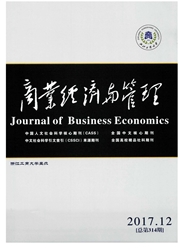

 中文摘要:
中文摘要:
提高全要素生产率(TFP)是保障中国经济健康可持续发展的根本保障,文章阐述了Fare-Primont(FP)指数测算TFP的优势,利用FP指数对我国1995-2012年省际TFP及其分解进行了分析。实证结果显示:2008年之前我国TFP对经济增长的年均贡献率为4.03%,2008年之后下降至一32.6%。金融危机后经济增长过度依赖要素投入,主要原因是TFP效率下降;由于2008-2012年东北、中部和西部地区的技术效率和技术进步均下降较多,使得三个地区TFP出现了较大幅度下降,而东部地区仅技术进步下降较大,TFP降幅相对较小;东部和东北省份的TFP水平值相对较高,省际差异基本呈现扩大趋势,西部地区表现为较低水平的俱乐部趋同。
 英文摘要:
英文摘要:
Improving the total factor productivity(TFP)is the fundamental foothold of ensuring the healthy and sustainable devel- opment of the Chinese economy. This paper discusses the advantages of F re-Primont(FP) index in measuring TFP, and analyses China TFP between 1995 and 2012 by FP index. The main research results show: The average contribution rate of TFP to economic growth is 4.03 before 2008 and -32.5% after 2008, which means that China economic development relies more on factor inputs after the finan- cial and economic crisis, and this is mainly due to the decline of technical efficiency; The TFP of Northeast, Middle and West China decrease rapidly in 2008-2012 because of the decline of technical efficiency and technical change, while the TFP of East China decrea- ses a little slowly because of the decline of technical change only ; The TFP level value of East and Northeast China are bigger than the rest and the variation of 29 provinces is ascending roughly, and in the West China there is club convergence in a low TFP level value.
 同期刊论文项目
同期刊论文项目
 同项目期刊论文
同项目期刊论文
 期刊信息
期刊信息
